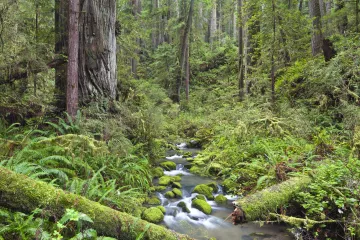
In the last few years, we have talked about ways to reduce plastic waste, including avoiding single-use containers and utensils. We’ve also talked about the prevalence of microplastics in our environment and even in our bodies.
Now let’s focus briefly on one specific source of microplastics polluting our waters: textiles.
Petroleum-based plastic is used extensively in mass-manufactured textiles, from our clothes to our bed sheets to our recreational gear. The pollution they create is everyplace, even our national parks and wilderness areas.
“Microplastics were present in 98% of all of the wet and dry samples analyzed from U.S. protected areas,” according to a 2020 study on U.S. national parks by Janice Brahney, et al. “Fiber compositions were mainly consistent with those of textiles used for clothing, including cotton, polyester, and nylon. We also observed fibers composed of polyolefin, which is more commonly used for household and vehicle carpeting, as well as polytetrafluoroethylene and polyethylene fibers, which are used in a variety of industrial applications.”
Polypropylene and polytetrafluoroethylene are commonly used in outdoor gear, including fleece, tents, waterproof clothing, and climbing ropes.
Microfibers shed from clothing during normal wear, laundry washing and drying, and disposal. Clothing fibers released directly to the atmosphere during laundry drying—far more than the amounts released to wastewater during the washing phase—are then transported to protected areas during times of favorable wind speeds and trajectories.
“The finding that microplastics are ubiquitous in the atmosphere and are transported to distant locations has widespread ecological implications,” said study authors.
Vote With Your Pocketbook
- Avoid plastic-based synthetic fibers such as polyester, nylon, and acrylic.
- Choose 100% natural fibers such as wool, alpaca, cotton, and hemp.
- Seek out untreated fibers and natural dyes
We will continue to discuss this topic, including ways you can mitigate microplastics of all kinds in drinking water, in coming months.
Photo by Bob Wick, Bureau of Land Management (CC BY 2.0)